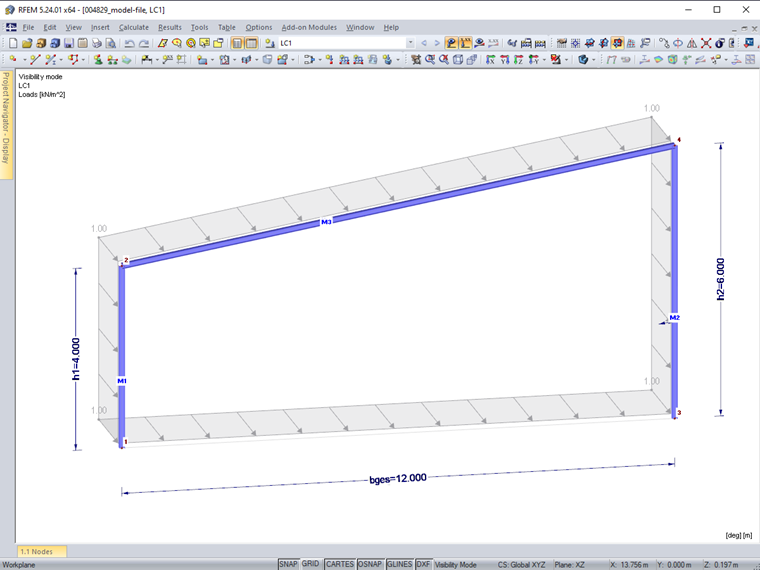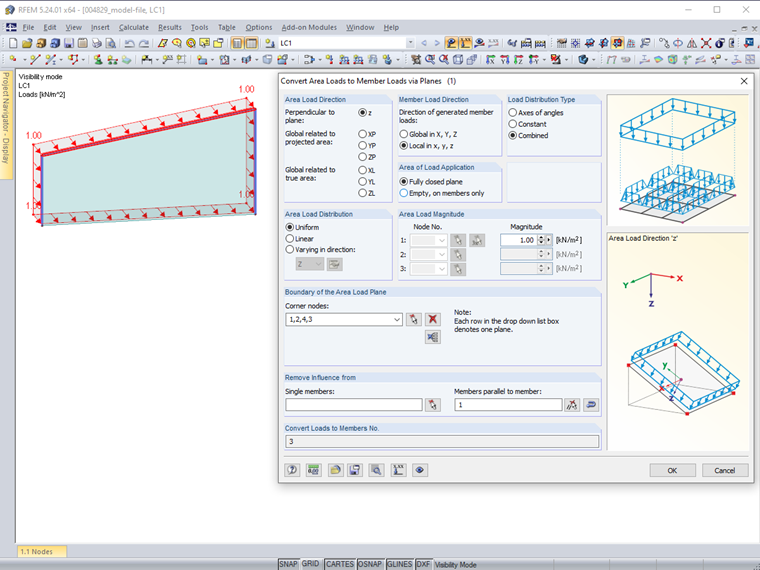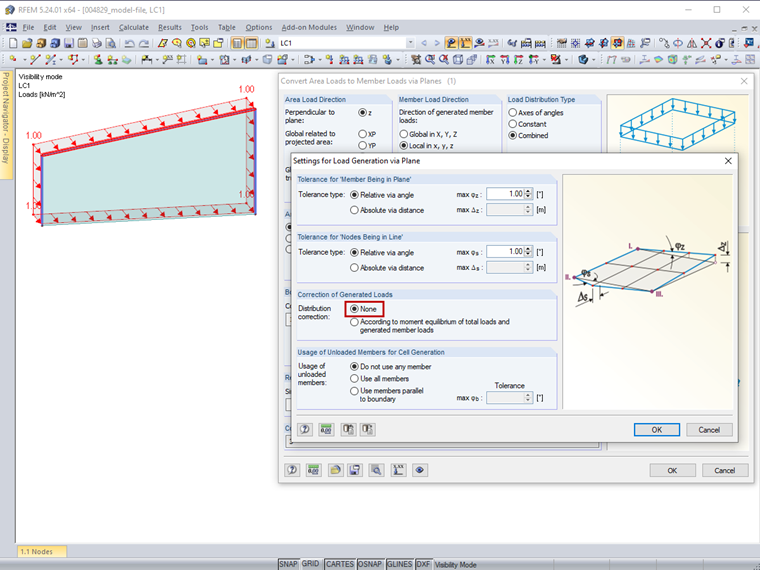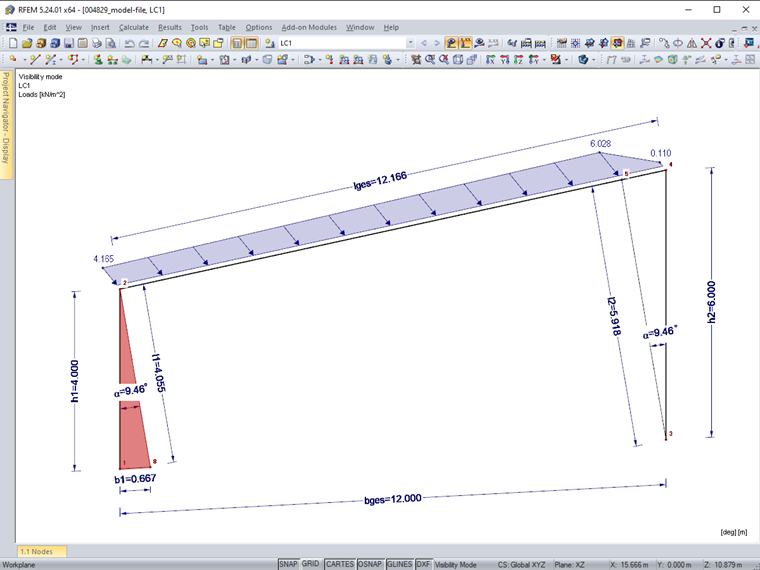Une charge surfacique de 1 kN/m² délimitée par les nœuds 1 à 4 est appliquée uniquement à la barre 3 (Figure 01).
Les entrées effectuées dans le générateur de charge sont indiquées sur la Figure 02. Il n’y a pas de correction de la distribution selon l’équilibre des moments (Figure 03).
La charge de barre générée est affichée sur la Figure 04. Celle-ci est calculée comme suit :
|
q |
Lastgröße Flächenlast |
|
AR |
Restfläche (im Bild 4 rot markiert) |
|
qc |
konstanter Lastanteil auf belasteten Stab |
|
q2 |
Stablast Knoten 2 |
|
q5 |
Stablast Knoten 5 |
|
q4 |
Stablast Knoten 4 |



